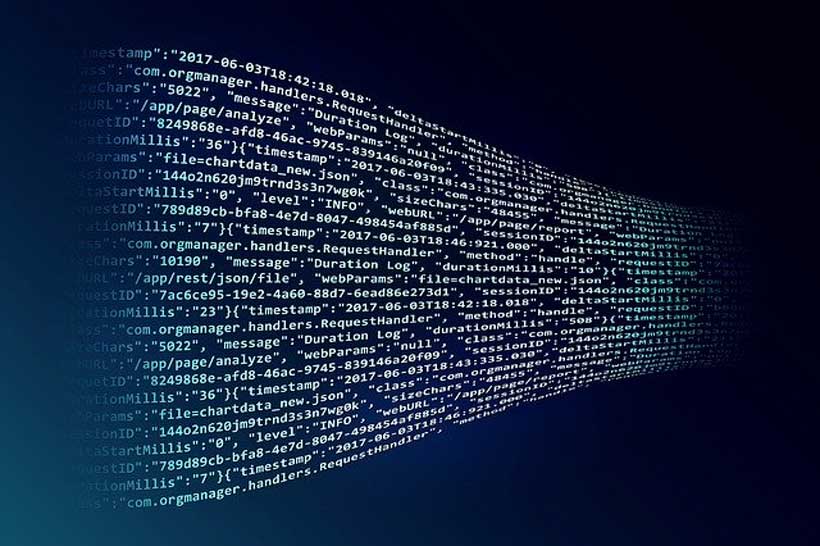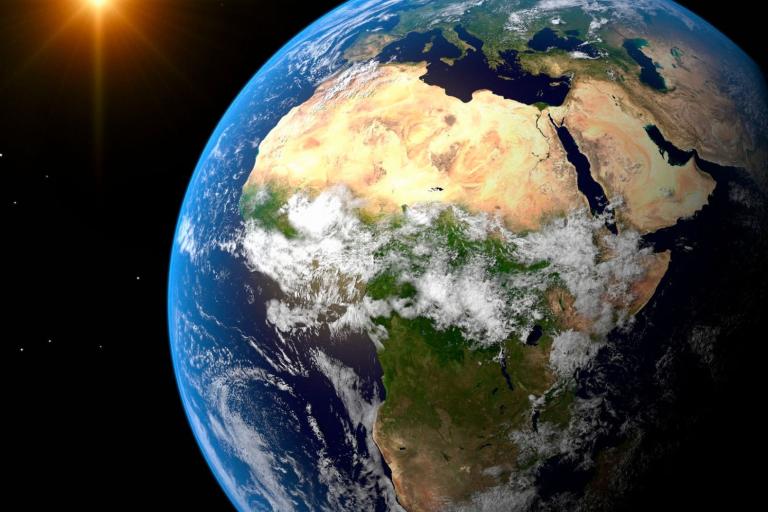Apple’s decision in Russia is rotten to the core — restore VPNs on App Store now
Apple must not turn its back on the people or civil society of Russia. Access Now and over 40 Russian and international civil society organizations and experts are demanding Apple stop helping Russia’s authoritarian regime suppress freedom of speech and restore all blocked Virtual Private Network (VPN) services on its app store in the country.
On July 4, 2024, Apple removed multiple popular VPN apps from its app store in Russia on the demand of Roskomnadzor, the country’s censorship agency, to the international community’s alarm.
From civil society to journalists, VPNs are the lifeline for anyone raising a voice for human rights in Russia — without VPNs, there’s no open internet in the country. By toeing the line set by Roskomnadzor, Apple is condemning the people in Russia to unbounded state surveillance and digital dictatorship. Apple is essentially shutting Russia from the global democratic internet with its VPN block.Anastasiya Zhyrmont, Eastern Europe and Central Asia Policy Manager at Access Now
Apple’s decision to comply with Russian authorities runs counter to its own policies and international human rights standards. Further, Apple’s ill-considered decision has put at risk resilient VPN services that have been fighting for an open, safe internet despite continuous attempts by the Russian authorities to block their work. It has also put at peril the work of journalists, researchers, academics, and human rights defenders.
People in Russia already suffer from an unfree internet, aggravated by wartime censorship imposed since the Russian invasion in Ukraine. The Russian government has also continued to press digital platforms to remove Russian civil society content from their platforms, while blocking access to independent media websites, social media platforms, and Russian and international human rights organizations.
By removing VPNs from its App store, Apple has chosen to undermine its policies which acknowledge the critical importance of an open society and freedom of information and expression. Apple must understand the consequences of its actions and make immediate amends, or it will be complicit in Russian authorities’ assault on civic space in the country.Sarkis Darbinyan at Roskomsvoboda
Big Tech must not cede digital space to authoritarian diktats and risk the lives and freedoms of people in Russia. Access Now calls on Apple to immediately restore all VPN service applications previously removed from its App Store in Russia and not to comply with requests and orders from the Russian authorities that violate international human rights standards.
Open letter to Apple: Stop censoring Runet
Dear Mr. Cook,
We, the undersigned members of civil society, call on Apple to take transparent and decisive action in response to Russian authorities’ requests and orders to remove Virtual Private Network (VPN) apps from its App Store in Russia.
To our knowledge, Apple removed popular VPN apps, including Red Shield VPN, Le VPN, HideMyName, PlanetVPN, AdGuard VPN, and others, from its App Store in Russia on July 4, 2024.
According to letters sent to VPN service providers by Apple’s app review team, this decision was made in response to the Russian censorship agency’s (Roskomnadzor) demands. However, Apple has failed to explain why it deviated from its own standards and policies, which recognize “the critical importance of an open society in which information flows freely” and state that “hand in hand with the privacy of our users is our commitment to freedom of information and expression.” Instead, the company is yielding to the demands of an authoritarian government eroding the free internet, and ignoring the rights to information and free expression of people using its services.
According to reports by Freedom House and Reporters Without Borders (RSF), Russia falls in the worst category on internet freedom indices and has an “unfree internet.” A joint study by Roskomsvoboda and OONI, following the first year of Russia’s war in Ukraine, also confirms that thousands of internet resources in Russia have been subject to wartime censorship. Since March 2022, authorities have blocked access to all independent media websites, social media platforms such as X, Instagram, Facebook, and YouTube, and Russian and international human rights organizations’ online web resources, including publications by Human Rights Watch, Amnesty International, RSF, Moscow Helsinki Group, and others.
To date, tools based on VPN technology are one of the most effective ways for people in Russia to stay online and access independent information, circumventing pervasive online censorship.
Living in a digital dictatorship, people in Russia rely on the App Store not only as an application store for their devices, but as the only window to free and independent information, accessible via VPN applications. These have been developed by independent media, VPN service developers, and civil society activists.
Furthermore, some of the VPNs removed from the App Store are known for keeping their services available for people in Russia, despite continuous attempts by the Russian authorities to block their work using Deep Packet Inspection (DPI). Unfortunately, Apple’s ill-considered decision to comply with Russian authorities’ demands negates the afore-mentioned actions taken by activists, developers, and journalists to safeguard the right to freedom of information and privacy.
By removing these VPN apps, Apple is making it easier for Russian censors to control information in the Russia’ online space (Runet).
Apple must immediately restore all these VPNs to the App Store in Russia, and must not comply with requests and orders from the Russian authorities that violate international human rights standards.
We are alarmed that the company is not sufficiently verifying whether such requests comply with Apple’s own policies and standards. By failing to do so, it is contributing to Russian censors’ attempts to silence human rights and anti-war voices, as well as thousands of independent journalists.
Roskomnadzor’s blocking requests, which are enabled by Russian information laws, contradict both Apple’s own principles, as well as international human rights standards. The European Court of Human Rights (ECtHR) has repeatedly found that Russian legal norms used to restrict access to information are overly vague and incompatible with the European Convention on Human Rights, as seen in the Kablis v. Russia, OOO Flavus and Others v. Russia, Bulgakov v. Russia, Engels v. Russia, and Vladimir Kharitonov v. Russia cases. While specifically assessing Russian authorities’ demands and subsequent actions, the Court concluded that the demands were arbitrary, noting that “suppressing information about the technologies for accessing information online on the grounds they may incidentally facilitate access to extremist material is no different from seeking to restrict access to printers and photocopiers because they can be used for reproducing such material,” and pointing out that “the blocking of information about such technologies interferes with access to all content which might be accessed using those technologies.”
The Court also noted that filter-bypassing technologies cannot be seen solely as tools used to malevolently seek out extremist content. Even though any information technology can be used to carry out activities incompatible with democratic principles, filter-bypassing technologies have many legitimate uses, such as enabling secure links to remote servers or channeling data through faster servers to reduce page-loading time.
The UN Human Rights Committee has also expressed concern about reports that thousands of websites and resources, as well as a number of social media platforms, have been blocked in Russia, and has called all laws that unreasonably restrict freedom of expression to be urgently repealed. Furthermore, the UN Guiding Principles on Business and Human Rights, which Apple has committed to upholding, require companies to avoid infringing on the human rights of others and to address any adverse human rights impacts resulting from their activities.
We ask you to take these important human rights issues into account when making decisions regarding your platforms.We acknowledge the challenges that Apple may face when requested to comply with laws used to censor and suppress free speech, which violate international and regional human rights standards. This issue has been raised with Apple previously, in the context of app removals in China. However, we are confident that Apple has sufficient tools to counter Russian authorities’ attempts at censorship and to protect people’s rights. Google is currently resisting demands from Roskomnadzor to remove VPN apps from the Google Play Store; Apple should follow its example.
We urge you to assess all blocking orders and requests in terms of their compliance with international human rights standards, and not to accommodate those that restrict access to protected expressions and services (applications), instead challenging their legality by all available means.
We ask you not to concede to the authoritarian Russian government’s efforts to suppress freedom of speech, and to instead restore all blocked VPN services on the App Store in Russia.
We thank you for your attention to this issue. We stand ready to cooperate with to find solutions that will best serve the people using your products and services.
Signatories
Organizations
- Access Now
- Amnezia VPN
- BlancVPN
- Board of the Civil Society Forum
- Committee to Protect Journalists
- Electronic Frontier Foundation
- Eurasian Digital Foundation
- GreatFire
- HidemyName VPN
- Human Constanta
- Human Rights Watch
- Le VPN
- Majal
- Mass Media Defence Centre
- Mediazona (zona.media)
- Net Freedom
- NA SVYAZI
- OVD-info
- Pervyi Otdel (First Department)
- Proton
- Red Shield VPN
- Reporters Without Borders (RSF)
- RKS Global
- Roskomsvoboda
- Teplitsa (te-st.org)
- And three organizations that chose to stay anonymous
Individuals
- Alexander Plushev, journalist, YouTube Channel “Breakfast show”
- Dmitry Kolezev, journalist
- Ekaterina Martynova, publisher of DOXA
- Galina Arapova, media lawyer, founder Mass Media Defence Centre
- Ivan Pavlov, founder of Team 29 and First Department
- Katya Arenina, correspondent of Proekt
- Ksenia Ermoshina, Senior researcher at the Citizen Lab and eQualit.ie
- Maxim Katz, politician and youtuber
- Oleg Grigorenko, Editor in Chief of 7×7 Horizontal Russia
- Pavel Kanygin, CEO at Prodolzhenie Sleduet Media
- Roman Dobrokhotov, chief editor The Insider
- Ruslan Daiyrbekov, Eurasian Digital Foundation
- Sarkis Darbinyan, cyberlawyer, founder of Roskomsvoboda
- Sergey Lukashevskiy, Editor in Chief of Radio Sakharov
- Taisiya Bekbulatova, Editor-in-Chief Holod
- Zhanna Nemtsova, founder of Boris Nemtsov Foundation





